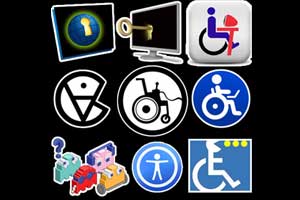10 Ways How Android Outruns iPhone's New OS
 #1 Accessibility features
#1 Accessibility features
Accessibility features make it easier for people with vision, hearing, learning, and mobility disabilities to better use their devices.
With iOS 6 Apple has significantly improved its already stellar accessibility features. They have added a new feature called Guided Access. Apple puts it best: "Guided Access helps students with disabilities such as autism remain on task and focused on content. It allows a parent, teacher, or administrator to limit an iOS device to one app by disabling the Home button, as well as restrict touch input on certain areas of the screen."
Google has made accessibility a focus in Jelly Bean. Jelly Bean lets blind users use a "Gesture Mode" to navigate the OS using touch and swipe gestures in combination with speech output. Google has also added TalkBack, a screen reader for Android which supports gestures to trigger actions, to navigate applications, and traverse text.
Google has come a long way but Apple's accessibility features are robust and the company has put a lot of time and work into it.
Apple gets thumbs-up
Summing Up
Jelly Bean's updates are focused around speed. Google wanted to drastically improve the performance throughout the system and for the most part they achieved that.
Apple has polished its operating system and added a lot of nifty features but it is still struggling to keep up with Android.
But then little green fellow got most thumbs-up, making Android more robust OS than Apple’s.
